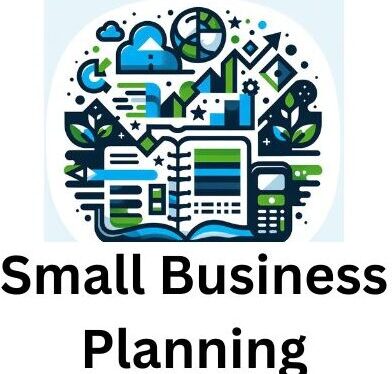
I’m going to walk you through the tangled web of small business planning. This isn’t just about jotting down some goals and a budget; it’s also about carving out a clear path for growth amid a sea of uncertainties. When you’re steering your own ship, it can be tough to predict storms and navigate through them.
You might believe that a simple plan is all it takes to get your business off the ground. But here’s a reality check: Careful planning is more than a document; it’s an ongoing process that necessitates constant adjustment and evaluation. I’m here to help you understand that a well-thought-out strategy can be the difference between sailing smoothly and capsizing in rough business seas.
Now, brace yourself for some sobering statistics: a staggering percentage of small businesses don’t make it past their first few years. Why? Often, it boils down to inadequate planning. Without a well-crafted plan, selecting profitable avenues for growth becomes a guessing game rather than an informed decision.
With the groundwork laid out, you’re going to find out how to dodge financial bullets in the next section. It’s all about securing your cash flow and funding your dreams in a way that keeps your business thriving, not just surviving.
Navigating Financial Hurdles in Small Business Planning
I’m going to level with you: managing money is at the heart of running a successful small business. Cash flow management isn’t just corporate jargon; it’s the lifeline that keeps your business afloat. The trick is to forecast your cash flow—that’s predicting your future financial position by analyzing the cash you expect to receive versus the expenses. This might seem intimidating, but it’s a crucial skill you can master with a bit of practice.
Securing funding might be high on your to-do list, right? Well, you’re not alone. Many small businesses rely on loans, investors, or savings to get started. You’re going to find out about several strategies to get that much-needed capital. One key approach is to keep your budgets realistic and tight. Overspending is a common pitfall, but when you budget effectively, it helps prevent it.
Let’s talk real-world scenarios. I’ve seen businesses stumble with finances because they didn’t plan ahead or didn’t adapt quickly to change. On the other hand, businesses that have thrived typically had a solid financial plan that they updated regularly. These winners also had backup plans to deal with unexpected costs or downturns in revenue.
Now, I want you to think about financial resilience and adaptive planning methods. What does that mean? It’s about creating a financial buffer and being ready to pivot your strategies when necessary. For example, you might allocate a portion of profits to an emergency fund or diversify your services to tap into different revenue streams. Such measures can be your safety net when times get tough.
Lastly, connecting effective financial planning with the human side of your business will set you up for the next hurdle. The strategies you lay out for financial management directly impact your team. That’s going to include salaries, benefits, and even the work environment. You can always adjust your approach down the road, but strive to find that sweet spot where financial stability supports a thriving workforce—which I’ll dive deeper into in the next section.
The Human Element: Dealing with Workforce Planning
You might think that finding the right people is a challenge only for the big players, but guess what? Smaller businesses often struggle with this too. The competition for talent is fierce, and as a small business, you’re not just competing with other businesses in your local area; you’re competing with companies worldwide.
Creating a place where people want to work goes beyond the paycheck. It’s about fostering a workplace culture that resonates with your team. It’s about shared values, support, flexibility, and growth. When you nail this, you’ll not just attract better candidates, but you’ll keep them around. That’s going to include investing in their development, which pays back in loyalty and productivity.
Now, I know what you’re thinking: ‘All this sounds great, but how do I actually do it?’ Start with the basics. Clear and transparent communication, recognizing achievements, and providing opportunities for advancement can go a long way. And I’m not just saying that—it’s backed by plenty of studies.
As we talk tech in the next part of this discussion, keep in mind that technology isn’t solely about automating processes or crunching numbers. It can also be about enhancing your team’s work experience. From streamlined communication tools to e-learning platforms for skill development, technology offers a plethora of ways to bolster your workforce planning.
Leveraging Technology for Strategic Planning
Now, you’re going to find out about how technology isn’t just a buzzword; it’s a powerful ally in your small business planning. In this fast-paced world, where a lot is happening very quickly, incorporating technological solutions can streamline operations and provide a competitive edge.
If you want to simplify your business processes, there’s a heap of software and tools designed to do just that. From accounting to customer relationship management (CRM), technology can take the pressure off your day-to-day tasks, freeing up time for you to focus on growth strategies.
Don’t worry too much about the intimidation factor that often comes with new technology. Sure, there might be a learning curve, but the long-term benefits far outweigh the initial challenges. Take, for instance, businesses that adopted cloud-based tools and e-commerce platforms; many of them saw improved efficiency and increased sales.
In my opinion, the success stories of small businesses that embraced technology are the best learning materials. They provide a blueprint for what works. Choose something that resonates with your business needs and has a proven track record of augmenting small business operations.
Finally, remember that your first attempt at integrating technology doesn’t need to be your last. You can always adjust your approach down the road. It’s about finding what works for your specific context and evolving with the times. I really hope that the information shared here helps you harness technology effectively, laying a strong foundation for the strategic planning essential to your business’s success.
